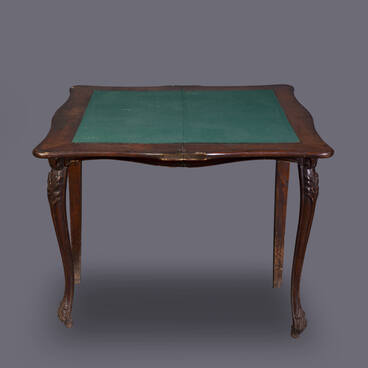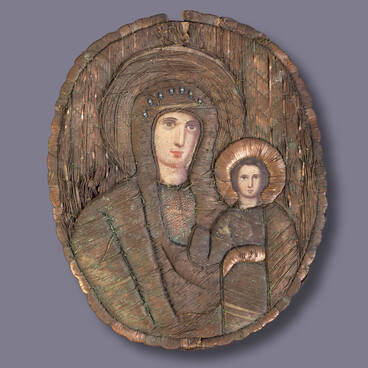The festive rushnik towel was embroidered at the weaving factory of Krolevets. Krolevets is a small old town, located in the Sumy region of Ukraine. Since ancient times the town has been a center of patterned weaving. The Krolevets towels gained the greatest popularity in the 19th century. Krolevets Craft School founded in 1909, trained potters, blacksmiths and weavers. This school exists today and provides training for future builders, construction technicians, hairdressers, salesmen, and masters of handmade artistic weaving.
The history of the Krolevets factory “Artistic Weaving” dates back to 1922, when weavers working at home united to establish the cooperative craft society of decorative art “Revival”. The artistic image of the Krolevets rushnik absorbed the main features of Slavic peasant decorative patterns: rosettes, circles, rhombuses, squares, triangles, and stars. Old rushniks feature stylized floral motifs, vases with flowers, similar to tulips, “crane” medallions, as well as “candlesticks”, from which, like a flame, red mallows rise up — the flowers that are clearly identified both on the weaved and embroidered patterns. Geometric shapes are accurately reproduced in the pattern. This style featured flowers, leaves, wheat heads, stars, birds, and the sky. A straight horizontal line represented the earth, a wavy line — water, and the cross was a symbol of fire.
The most typical geometric shape for weaving was the rhombus that once symbolized the sun, the ancient deity of the Slavic farmers. One of the significant elements of the design was the state symbol — the two-headed eagle. Such rushniks could be given by young people to elderly relatives as a sign of respect; they were also presented to brothers or a beloved one, who went for a long term military service. They were also used to cover the icon “In Search of the Perishing”. The combination of white and red colors is characteristic of the Krolevets rushniks. On a white background between the dense red parallel stripes a lavish pattern was woven. Some towels are woven with an all-over pattern, while others have such patterns that are dense on the edges and thin down to the middle. The use of the traditional weaving technique perebor is quite common.
The history of the Krolevets factory “Artistic Weaving” dates back to 1922, when weavers working at home united to establish the cooperative craft society of decorative art “Revival”. The artistic image of the Krolevets rushnik absorbed the main features of Slavic peasant decorative patterns: rosettes, circles, rhombuses, squares, triangles, and stars. Old rushniks feature stylized floral motifs, vases with flowers, similar to tulips, “crane” medallions, as well as “candlesticks”, from which, like a flame, red mallows rise up — the flowers that are clearly identified both on the weaved and embroidered patterns. Geometric shapes are accurately reproduced in the pattern. This style featured flowers, leaves, wheat heads, stars, birds, and the sky. A straight horizontal line represented the earth, a wavy line — water, and the cross was a symbol of fire.
The most typical geometric shape for weaving was the rhombus that once symbolized the sun, the ancient deity of the Slavic farmers. One of the significant elements of the design was the state symbol — the two-headed eagle. Such rushniks could be given by young people to elderly relatives as a sign of respect; they were also presented to brothers or a beloved one, who went for a long term military service. They were also used to cover the icon “In Search of the Perishing”. The combination of white and red colors is characteristic of the Krolevets rushniks. On a white background between the dense red parallel stripes a lavish pattern was woven. Some towels are woven with an all-over pattern, while others have such patterns that are dense on the edges and thin down to the middle. The use of the traditional weaving technique perebor is quite common.


